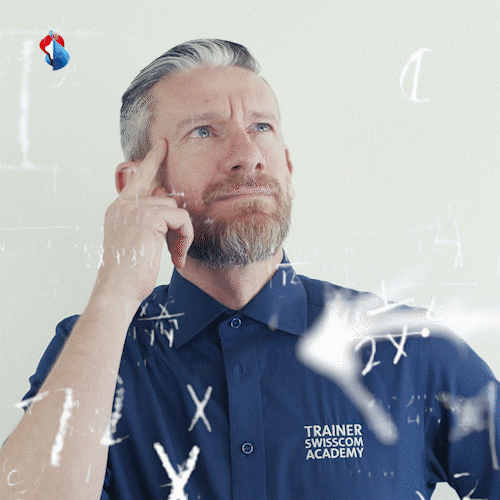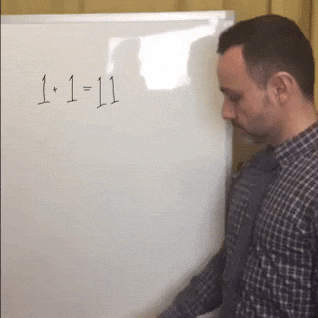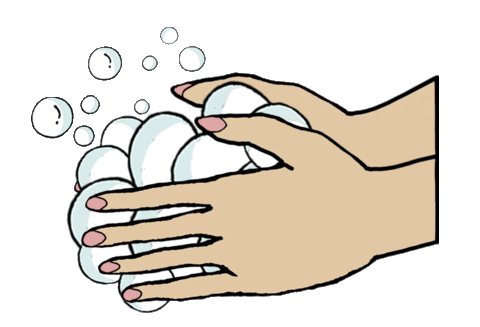First Impressions
The time I’ve spent observing classes in a local high school over the past few weeks has been the best part of my PDP program so far. In addition to the human interaction, which has been entirely lacking from my online Zoom-based schooling this fall, I have experienced during these observations a reconnected with both high school culture and physical classroom dynamics. This reconnection has thankfully reassured me of my decision to become a high school teacher. Though these are odd times to get a feel for the daily working life in a high school, I am very encouraged and impressed by both the adaptability and calm manner that teachers and students are embracing under the current set of pandemic protocols.
Until these past weeks, it had been 14 years since I was last in a high school (as a high school student). It wasn’t unexpected, therefore, that I had some apprehensions about returning to this environment. On top of there being a variety of pandemic measures in place, I had a number of other uncertainties concerning how high schools and high school student life has changed since I graduated. Thinking about how I felt on the first day, I am realizing now that many of my anxieties almost immediately disappeared, and each progressive week seems to make me feel more comfortable in the school environment and more confident in my career direction.
Grade 12 Math Class

I’ve been spending each week in a pre-calculus math 12 class in the morning and a human anatomy and physiology 12 class in the afternoon. This past week, I had the opportunity to connect with a student in the Math 12 class. As the majority of the class time is spent following along with the teacher’s explanations and examples, I hadn’t initially expected that there would be any one-on-one time with any of the students. I haven’t worked through a high school math problem in 14 years so when a student approached me for help with their problem on polynomial functions, I felt a little out of my place, to say the least. The term, “imposter syndrome”, sprung to mind immediately. I suppose this is likely a common feeling among us teachers-in-training. At first glance of the problem, I wasn’t sure I’d be able to help, but suddenly, remnants of math knowledge learned long ago came from the abyss and my confidence rebounded. I’m sure the student couldn’t tell my internal thought process as I stared at the question, but I felt inclined to let them know about my long absence from working through problems like these. As I worked through the first steps with her, trying to isolate the source of confusion, it was reassuring to realize how comfortable I felt in this exchange. What’s perhaps most significant about reflecting on this interaction now, however, is how I felt once this student understood her misconception in her approach to the math problem. Though math is surely not my passion, I began to feel by the end of the class that I could teach a math class one day.

Things Have Changed
I am encouraged by some of the modernization that has occurred in classrooms since I graduated high school. Technology, for instance, has progressed substantially and from what I’ve observed in these first few weeks, there is a wide range of acceptance by teachers to embrace these new tools in the classroom. I have nephews and nieces who are entering high school soon and I know that they live in a technologically-centered world. It seems obvious to me that some level of integration of technology into classrooms is necessary, not only to create engaging education for this generation, but to also promote proper etiquette surrounding the appropriate use of devices. I’m sure I will learn a lot in the coming months (and years) about how to balance the benefits of these tools with their potential costs.
Looking Forward
Focusing on my own science interest, I’m hoping to develop through these experiences a better understanding of how to encourage students to view the sciences with curiosity and fascination—a perspective I have had since childhood. I’m really interested in learning how to create an empowering atmosphere in the classroom that will allow students to engage with the sciences as a process of discover, rather than list of facts to remember. This is a process that has driven societal progress throughout history and, looking forward, will require the creative and diverse approaches of these students to continue this progress. The unsettling details of climate change will continue to become clearer, and the current and future generations of high school students will have to find ways to manage the mental health issues surrounding eco-anxiety, which has been increasingly documented among youth. I’m hoping that over the coming months I can find some insight from the current educational research as to how to best teach students about these issues in ways that address the critical environmental problems, and cultivate an empowering learning environment that can allow them to cope with the attributed mental toll.






This reminds me of my school visits. There has been A LOT of awkwardness in my classrooms… but my teachers have told us that we need to get comfortable with being uncomfortable. I was in a Writing 12 class and asked what a student was working on. She literally said “-_- nothing.” I was like…. “OKAY :D” and walked away as fast as possible.
Wow! That is rough! It is totally unpredictable what happens in a class full of strangers!
Can’t agree more about the human interaction. Zoom classes were getting a bit tiresome but actually going to a physical school helped rekindle some passion for sure!